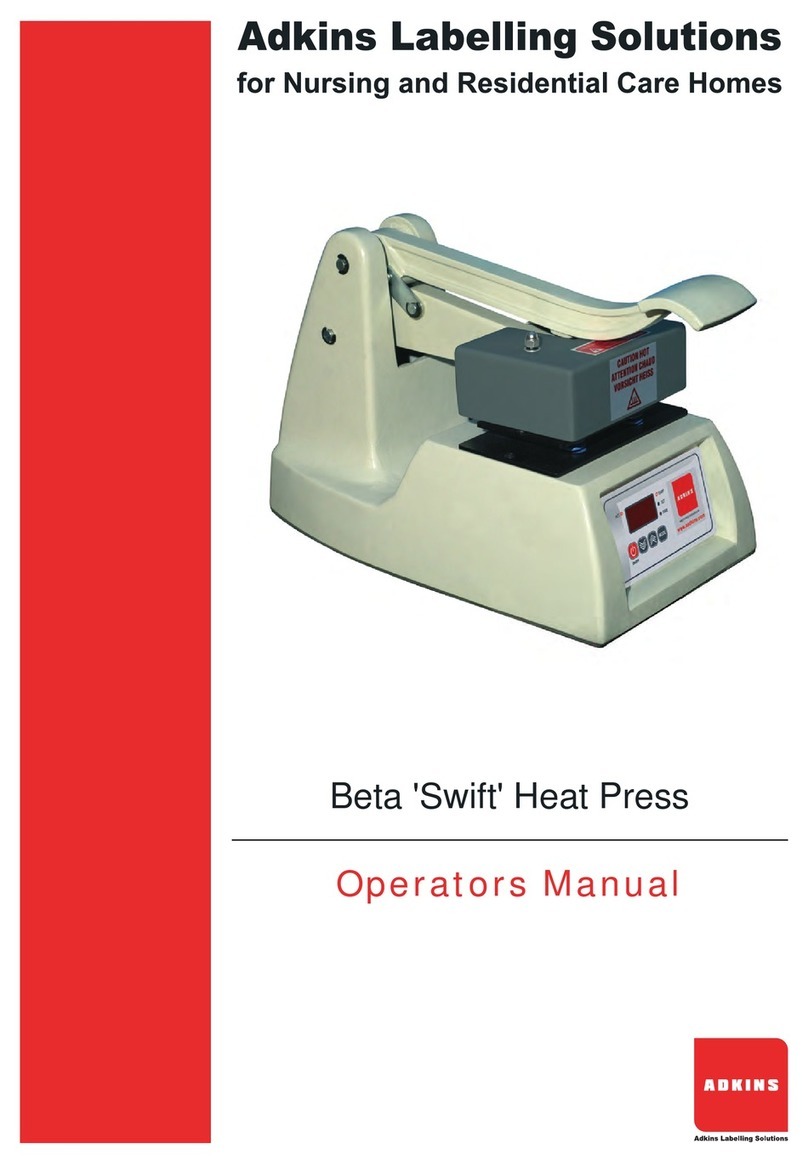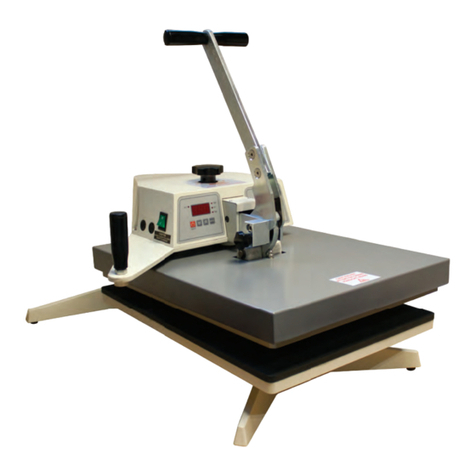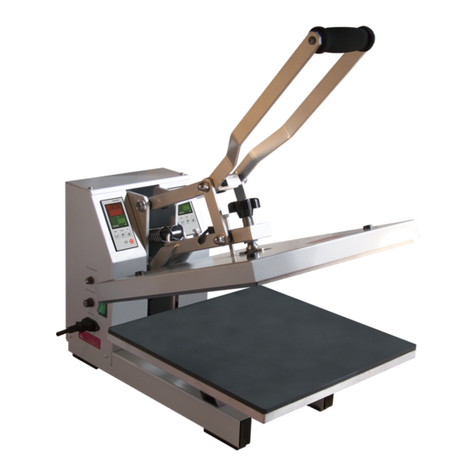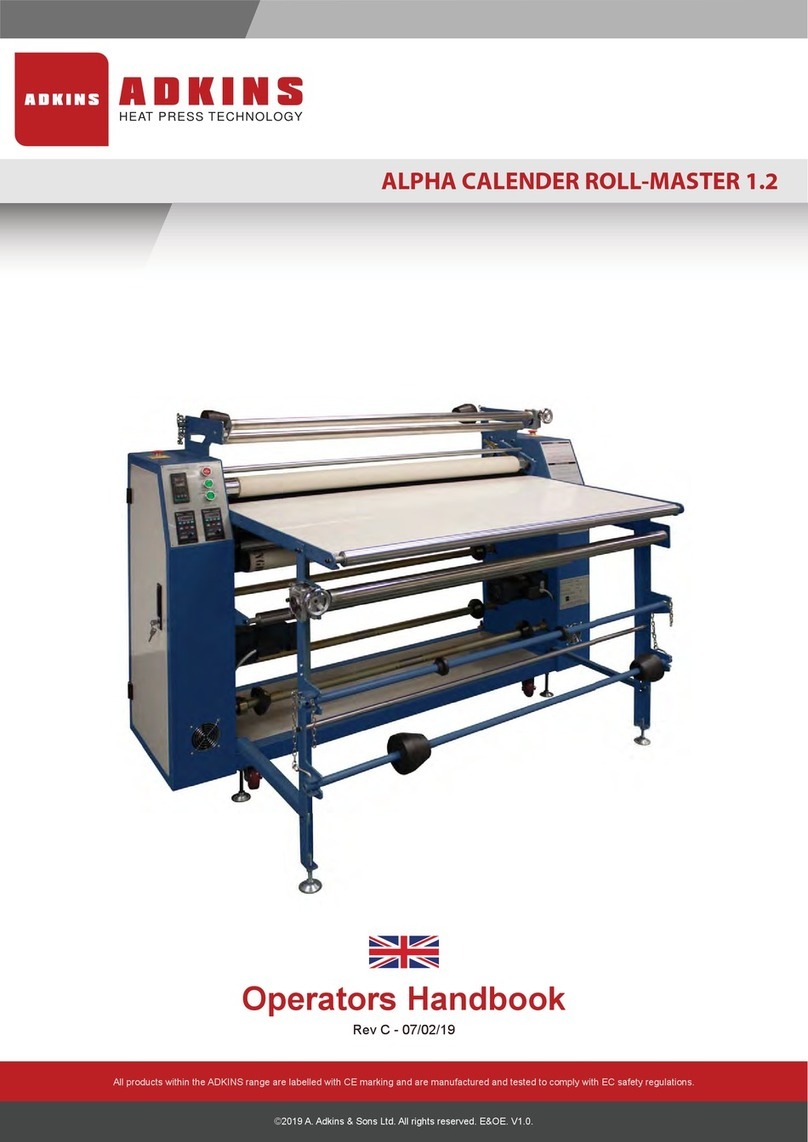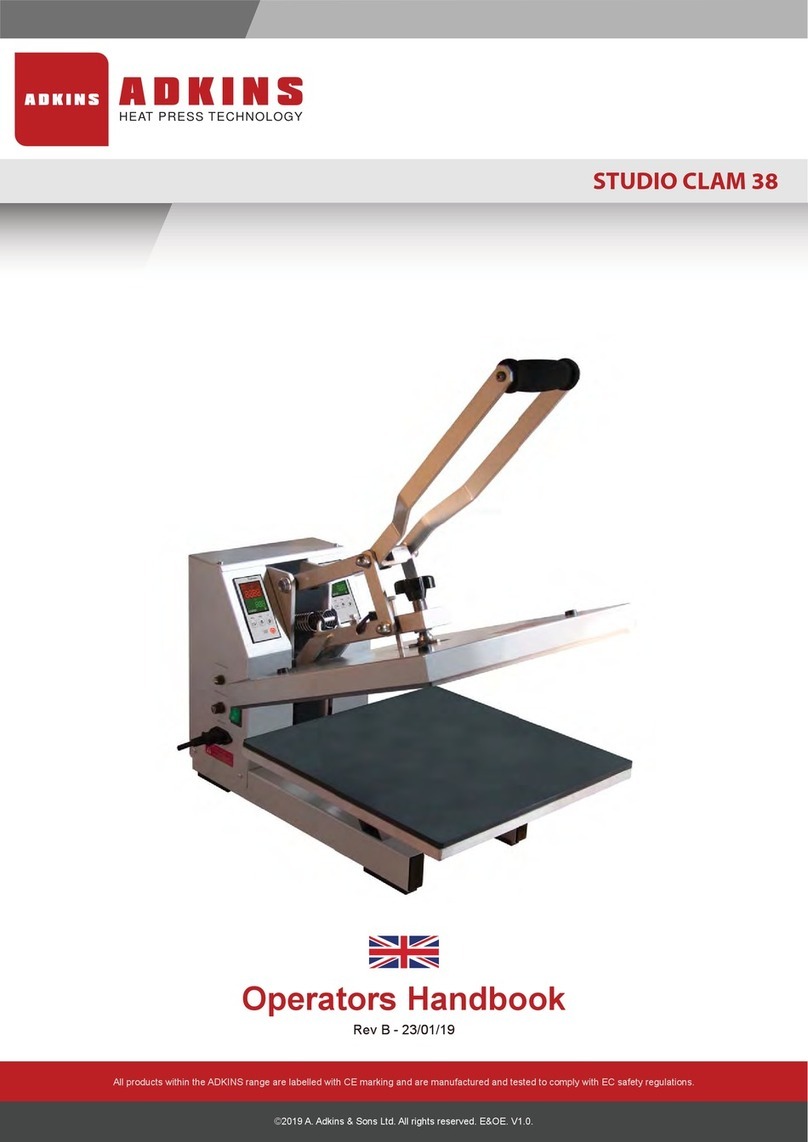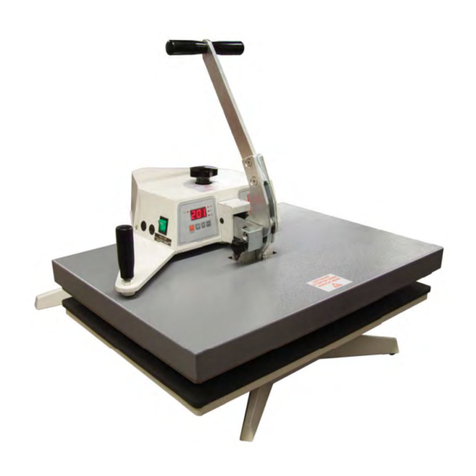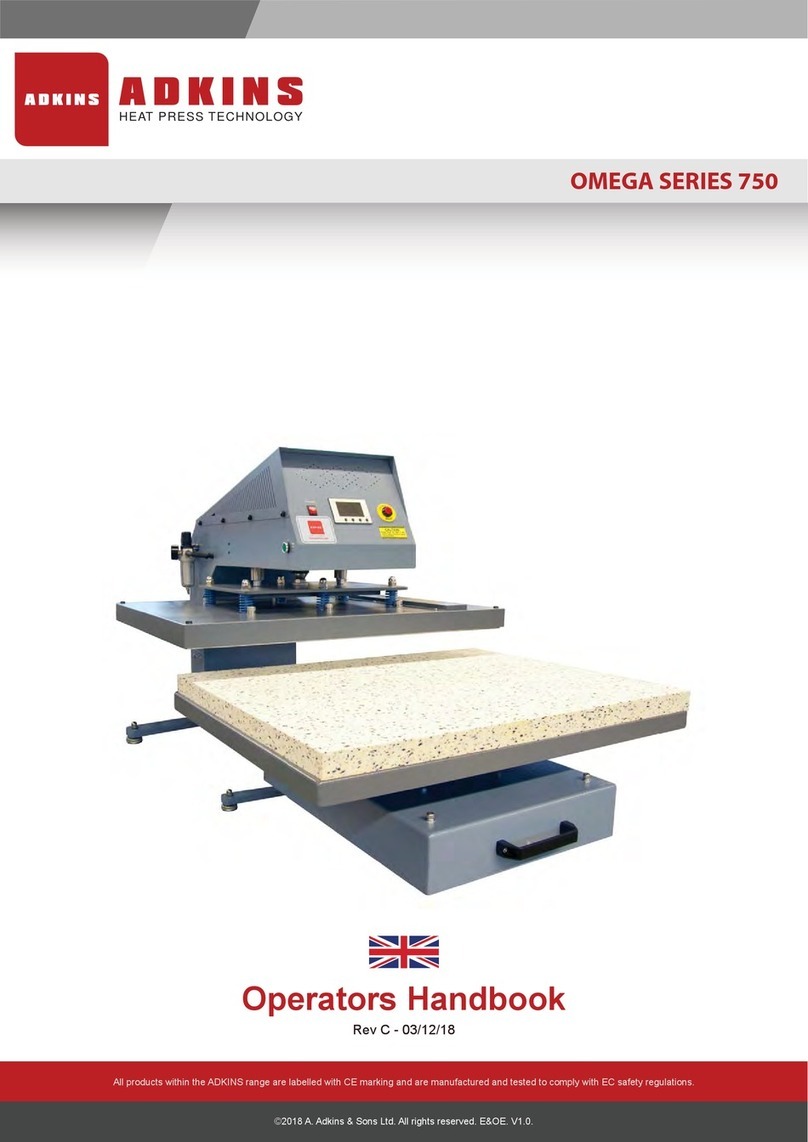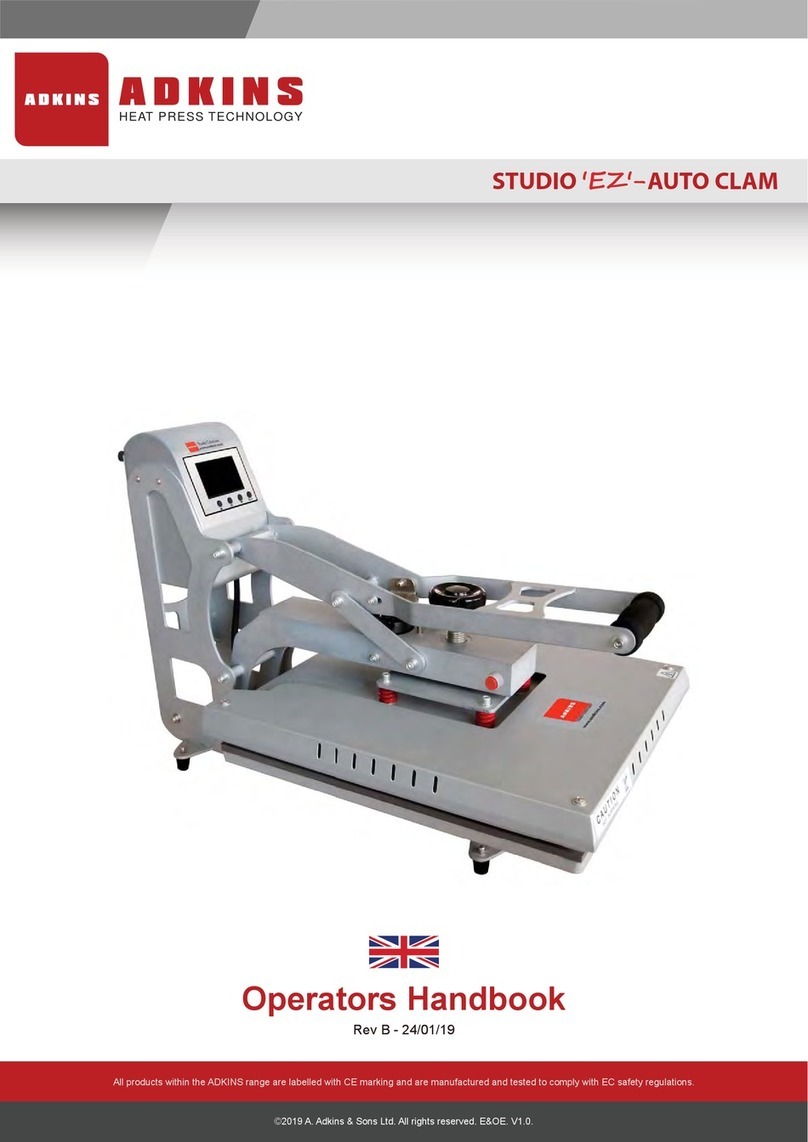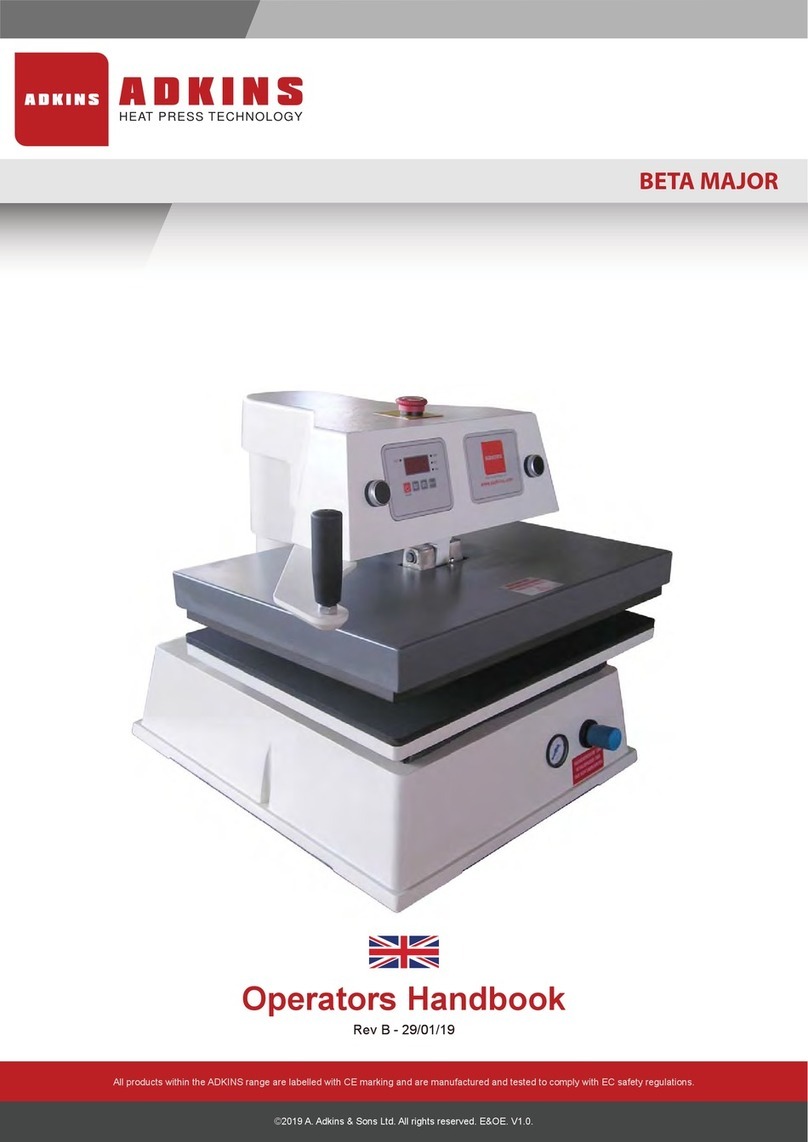Page 5
1.3 Safety
The Beta Combo Press has been equipped with various safety
features to ensure operator safety.
a. A thermal cut-out on the heating element shuts off the
power to the element if the temperature exceeds 235oC ±
15oC (455oF ±27oF).
b. The time/temperature controller has a built in facility
giving error messages in the event of faults with the element
heating and control system.
1.4 Safety Tips
If required, our customer service team can arrange maintenance
service.
The Beta Cap/ Pocket Combo Press meets the European
Legislation standard. Under normal conditions accidents are
rare. However listed below are some practical points to
ensure your safety.
Always switch off and isolate the mains supply (i.e.
remove plug) before undertaking any maintenance
work.
Keep other people away from the machine during use.
Ensure that there is sufficient space around the
machine. Cables and connections must not get jammed.
Although the heat radiation of the press is low, there
should be enough space for cooling down.
Avoid contact with the press element.
Make sure that before you change the attachments
ALL power to the machine is switched off; preferably
completely remove the plug from the mains socket.
Only when the heating element is COLD should
changing the attachments be undertaken. Carefully
unlock and unplug the lead from the base of the
machine, carefully remove the head attachment by
pulling out the safety catch* and place in a safe area,
making sure that you do not catch or scratch the
TEFLONcovered heating element.
Replace with the required new attachment (Cap or
Pocket) carefully pull out the safety catch on the head,
insert the runners and make sure that it is in its locked
position and is secure. Carefully insert the plug into its
socket and lock into place. Check that both head and
plug are secure, only then switch on the power to the
machine.

